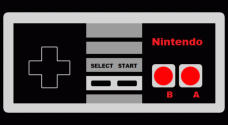Remember the satisfying thwack of digging a hole just in time? Or the panic as a guard chased you across a screen filled with ladders and gold? For many retro gamers, those memories are tied to a true 8-bit gem: Lode Runner NES. While the game originated on computers, Hudson Soft's 1986 port brought the frantic, strategic puzzle-platforming action to Nintendo Entertainment System's console, introducing a whole new generation to its addictive charm.
Forget complex storylines or fancy graphics; Lode Runner on the NES was all about pure, unadulterated gameplay. It challenged your brain as much as your reflexes, demanding careful planning and split-second decisions. It was tough, rewarding, and utterly timeless.
The NES Experience: Pixels, Sounds, and Controls
Playing Lode Runner on the Nintendo Entertainment System had its own distinct feel.
- Graphics: The NES version featured colorful, if simple, sprite graphics. The character models were iconic (including the very first appearance of the enemy that would become Bomberman!), and the static screens felt like intricate blueprints for chaos. It wasn't flashy, but it was perfectly functional and instantly recognizable.
- Sound: That catchy, looping soundtrack! The simple sound effects – the dig, the climb, the collect – were burned into the memories of players. They added to the urgency and the satisfaction of each level.
- Controls: The NES controller, with its simple D-pad and A/B buttons, was surprisingly well-suited for Lode Runner. Movement was handled by the D-pad, and the crucial "dig" action was assigned to a button (usually A or B, depending on how you played). It felt responsive and direct, crucial for those tight escapes.
Simple Premise, Deep Challenge
The goal in Lode Runner NES is deceptively simple: collect all the gold bars scattered across a single-screen level and reach the exit ladder at the top. Easy, right? Not when you're being relentlessly pursued by a handful of guards who want to take your life (literally, in the game).
You can't fight back directly. Your only weapon is your ability to dig holes in the floor. This core mechanic is where the magic happens and the strategy unfolds.
The Art of the Dig
Digging a hole in Lode Runner is your primary interaction with the world. Here's how it worked and why it was so clever:
- You could dig to your left or right.
- The hole was temporary; after a few seconds, it would refill.
- Guards (and you!) would fall into a hole.
- If a guard fell in, they'd be trapped for a short time, allowing you to walk safely over their head. They'd emerge after the hole refilled, often carrying the gold they might have picked up.
- If you were in a hole when it refilled, you'd lose a life. Ouch.
- Certain surfaces (like bedrock) couldn't be dug.
Mastering the dig meant learning timing, prediction, and using the environment to your advantage. It wasn't just about trapping guards; you'd use digging to create temporary paths, drop down multiple levels quickly, or even manipulate guards into collecting gold for you in otherwise inaccessible spots.
Those Pesky Guards
The enemy guards in Lode Runner NES were surprisingly smart (or frustratingly unpredictable, depending on your perspective!). They wouldn't always take the shortest path and sometimes seemed to have a mind of their own. Learning their movement patterns and anticipating their actions was key to survival. They could climb ladders and traverse bars just like you, making them a constant threat.
Levels of Lore
The NES version featured 50 unique levels. Starting simply, they rapidly introduced new complexities. You'd encounter levels requiring precise timing, intricate digging sequences, or careful manipulation of guard paths. Each level felt like a handcrafted puzzle box, demanding a unique approach. The satisfaction of finally clearing a particularly tricky stage was immense.
More Than Just Gold
While collecting gold was the main objective, there were other elements. Scoring points added a competitive edge, and managing your limited lives was crucial for survival. The game famously used a password system after every few levels, allowing you to continue your progress later – a vital feature given the game's difficulty and the lack of battery save on early carts!
Reliving the Run Today
Want to experience Lode Runner NES again or for the first time? While finding original hardware and carts can be a quest, there are ways to play:
- Emulation: Playing via emulators on PC or other devices is a popular way to revisit classic NES games. (Note: Ensure you own the original game cartridge when using ROMs).
- Modern Compilations/Remakes: Lode Runner has seen many iterations over the years, including modern releases like
Lode Runner Legacythat capture the spirit of the original, sometimes including classic levels.
Whether through nostalgia or discovery, the simple brilliance of Lode Runner NES holds up.
Frequently Asked Questions about Lode Runner NES
Q: How do I deal with the enemy guards? A: You can't defeat them directly. Your main method is to dig holes to trap them temporarily, allowing you to pass over them. You can also sometimes manipulate them into falling into inescapable pits or using them to collect gold.
Q: What happens if the time limit runs out? A: Each level has a hidden timer. If you don't collect all the gold and reach the exit ladder before it expires, you will lose a life and have to restart the level.
Q: How does the password system work? A: After completing certain levels, the game will display a password. You can enter this password on the title screen later to resume your game from that point, saving your progress.
Q: Is Lode Runner NES a multiplayer game? A: No, the NES version of Lode Runner is a single-player experience.
The Enduring Legacy
Lode Runner NES remains a beloved classic for a reason. It took a brilliant computer game concept and translated it perfectly to the 8-bit console, delivering a challenging, strategic, and incredibly fun experience. It's a testament to the power of simple mechanics executed flawlessly, proving that sometimes, all you need are some pixels, a few guards, a pile of gold, and the ability to dig.


